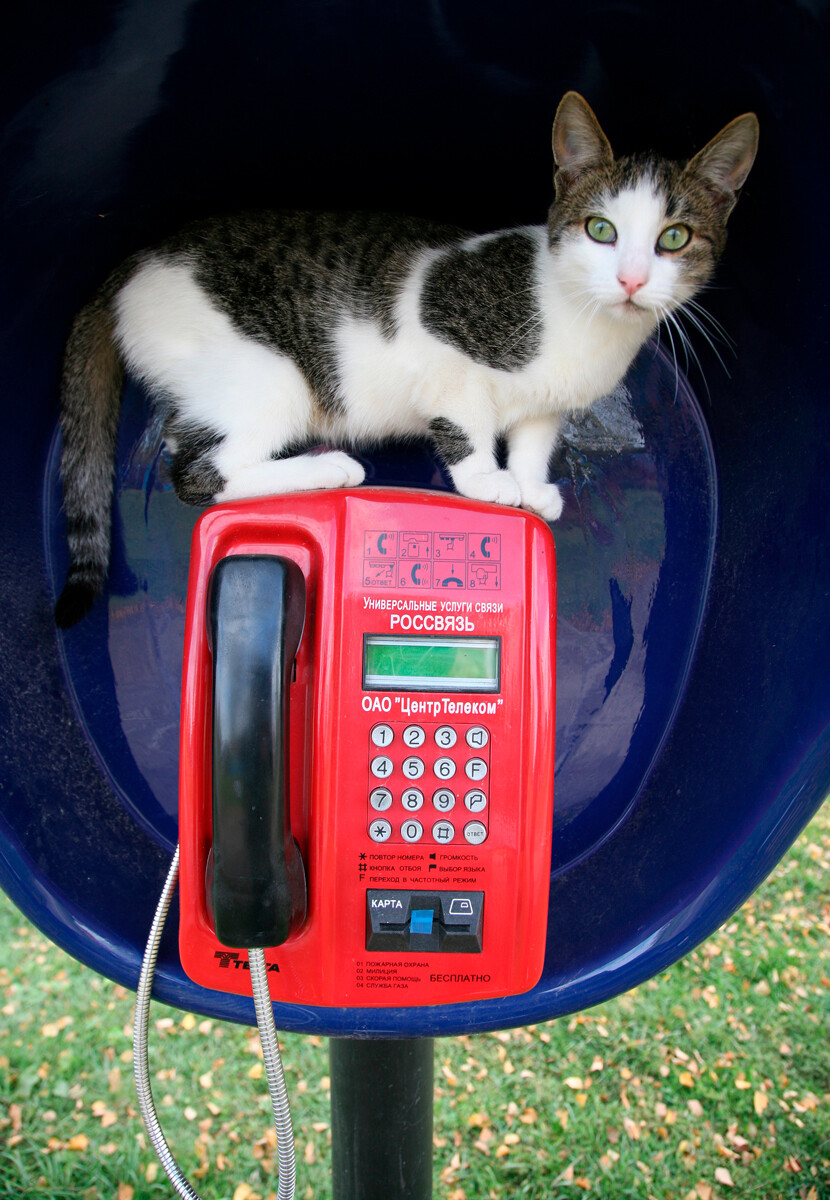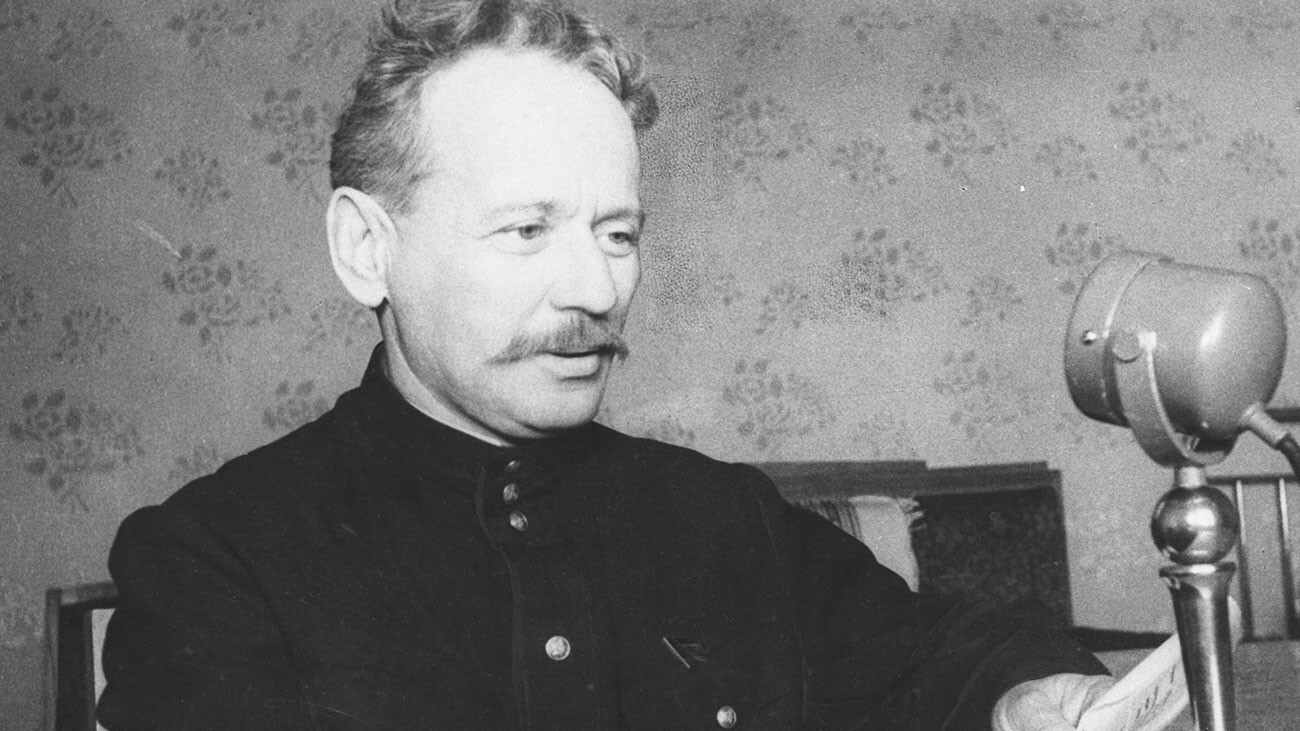
What Tsarist and Soviet payphones looked like (PHOTOS)
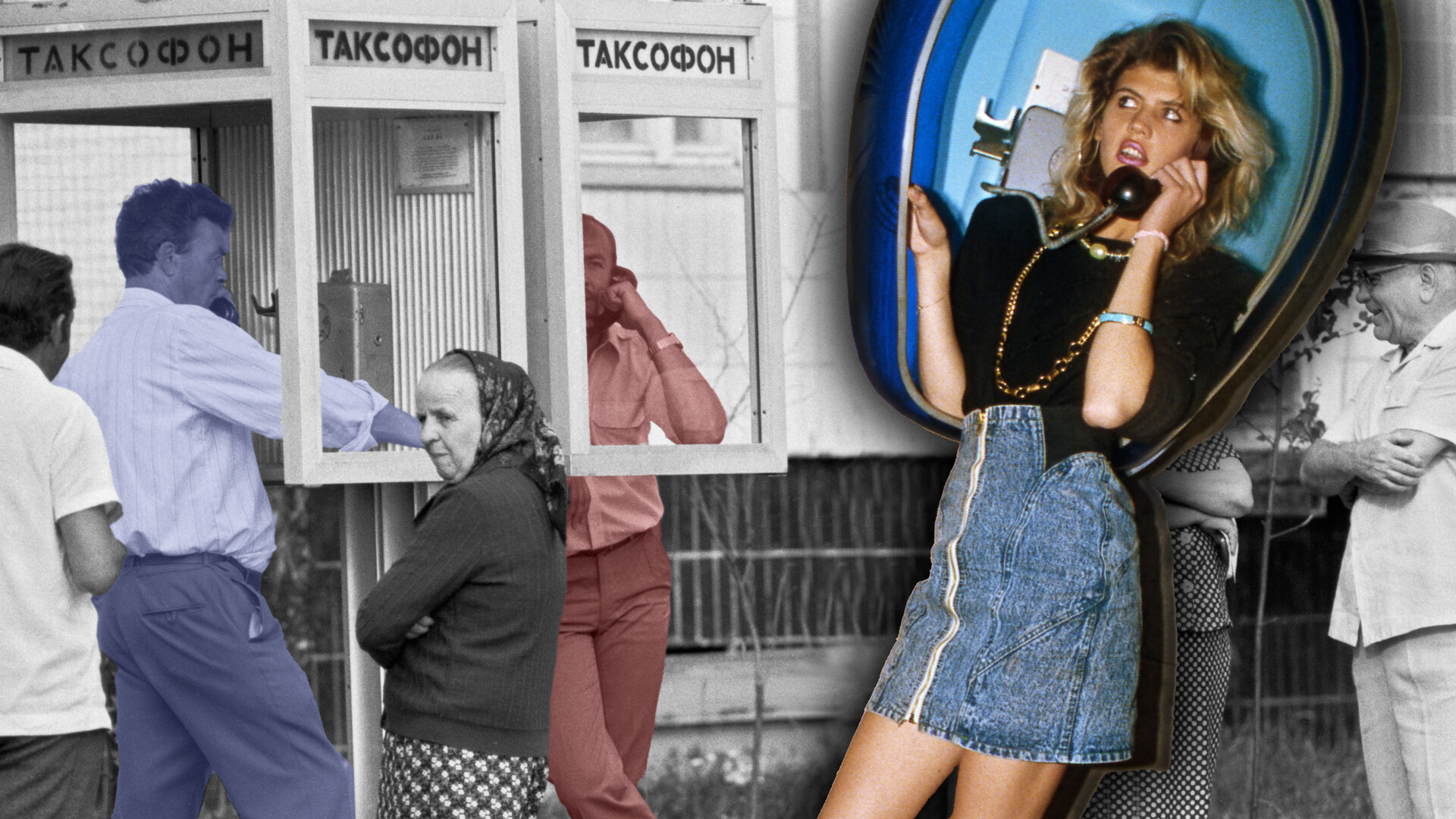
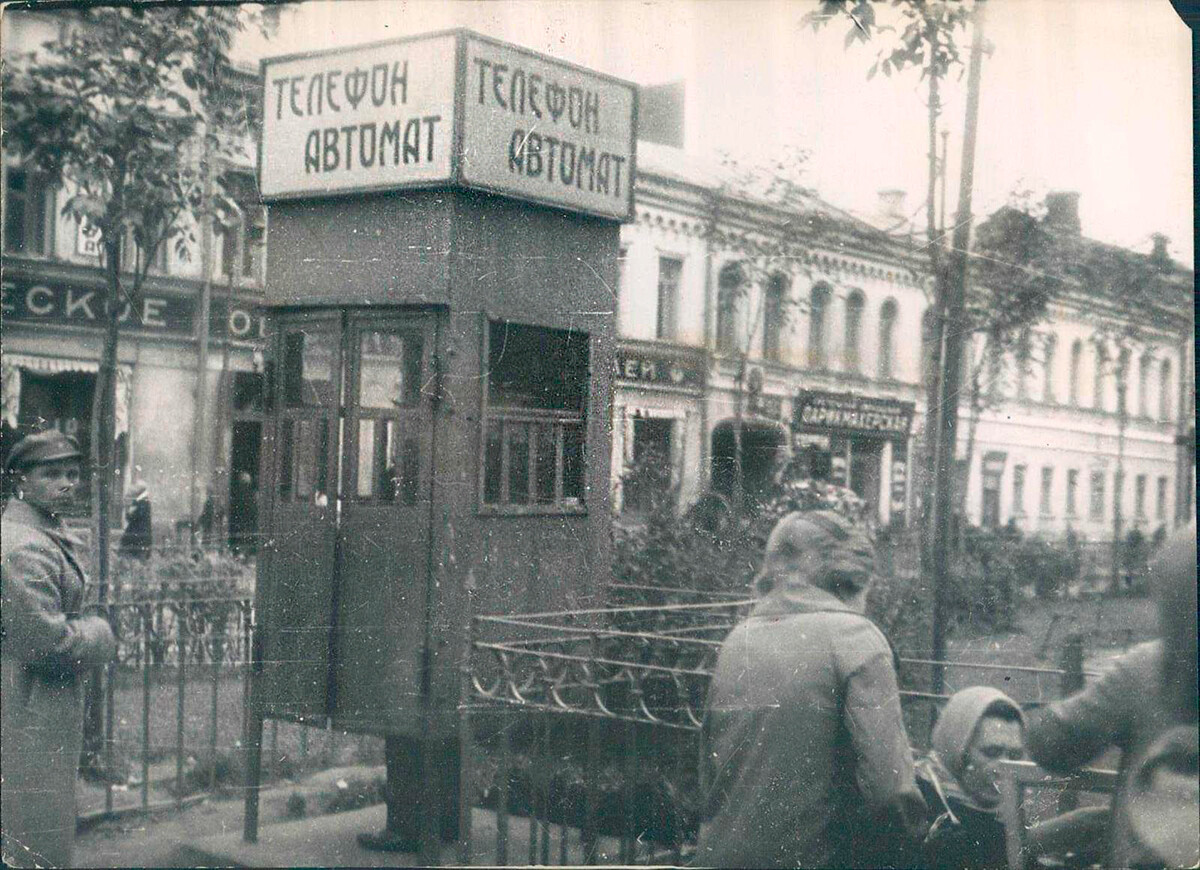 Street phone booth, 1929
Street phone booth, 1929
The first telephone booths appeared not even in the Soviet Union, but back in the Russian Empire. Engineer and inventor Alexander Popov (the one who invented the radio) spent a long time lobbying for their introduction, but the Moscow City Duma twice turned him down. It was only in 1909 that 26 payphones of the American company Bell appeared within the city boundaries.
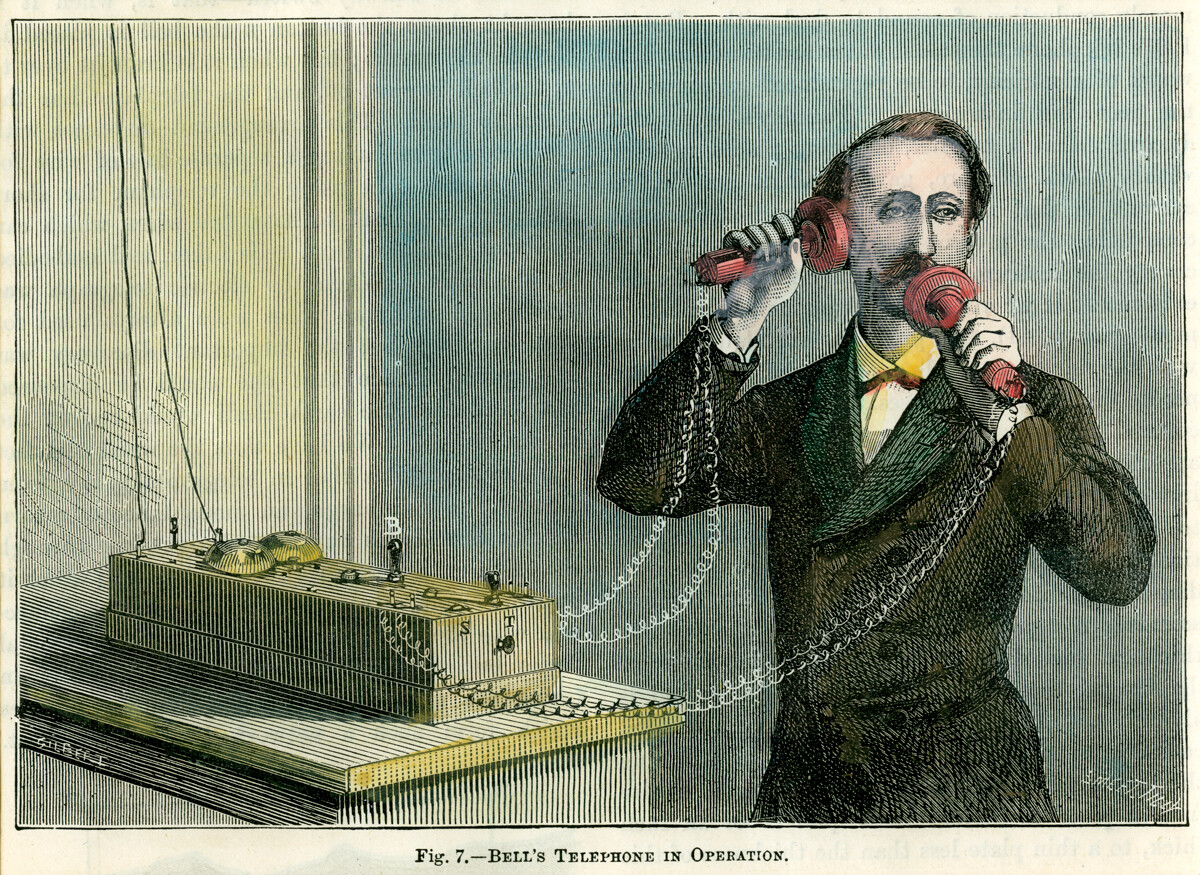
For soundproofing and convenience, special telephone booths were installed and their evolution went side by side with the evolution of the payphones themselves. At first, they were massive wooden boxes, which, later, were increasingly adapted to the urban environment and began to be made from glass and metal.
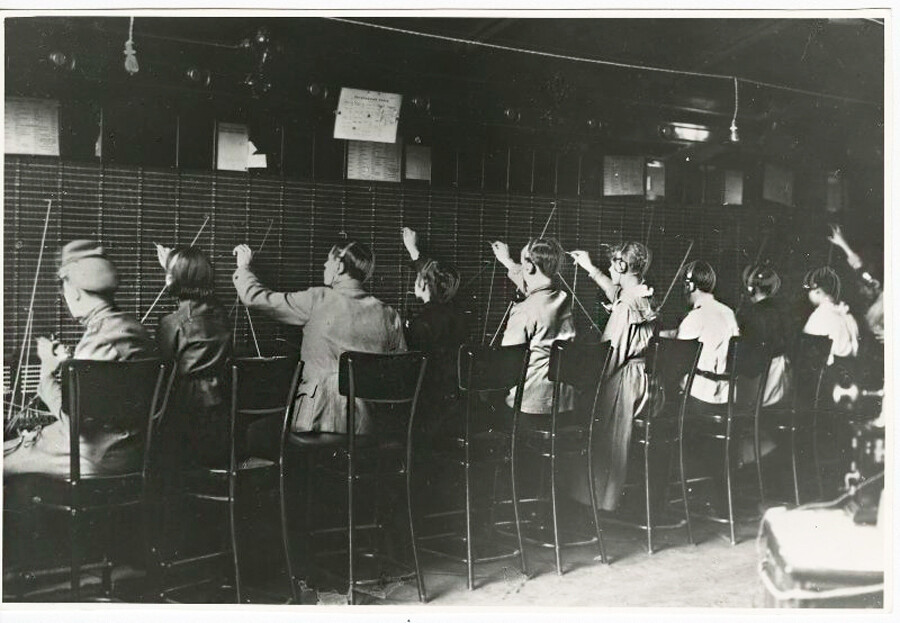 Telephone station in Petrograd, 1917.
Telephone station in Petrograd, 1917.
In 1916, the instructions for use stated: “A call is put through to the central exchange simply by taking the handset off its lever. The operator at the exchange should reply, giving their number. Then, the caller clearly and distinctly says the number to which a connection is desired.”
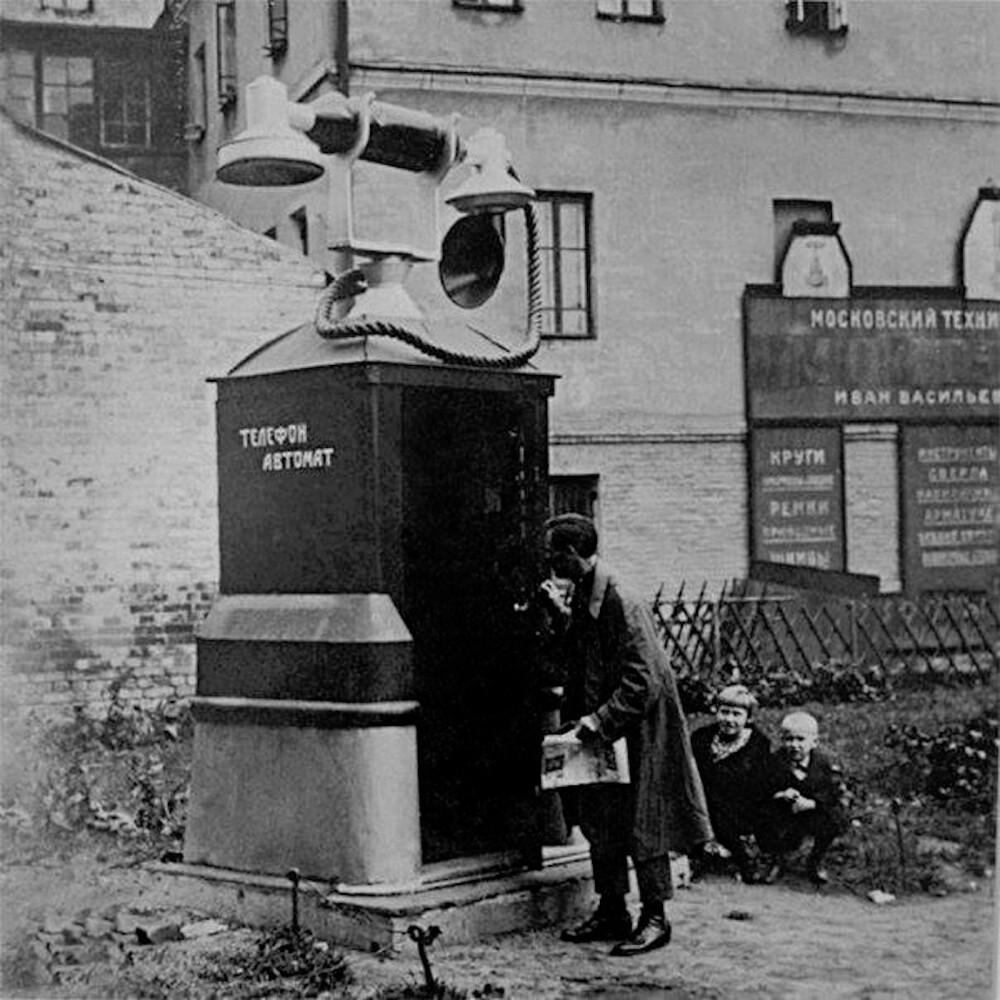
The Revolution of 1917 caused enormous damage to the telephone network. What was left of it was nationalized. A year later, Lenin signed a resolution ordering an “adequate number” of public phones to be installed in the city in a short space of time. But, the plan fell through: In 1921, there were only 10 of them in Moscow.
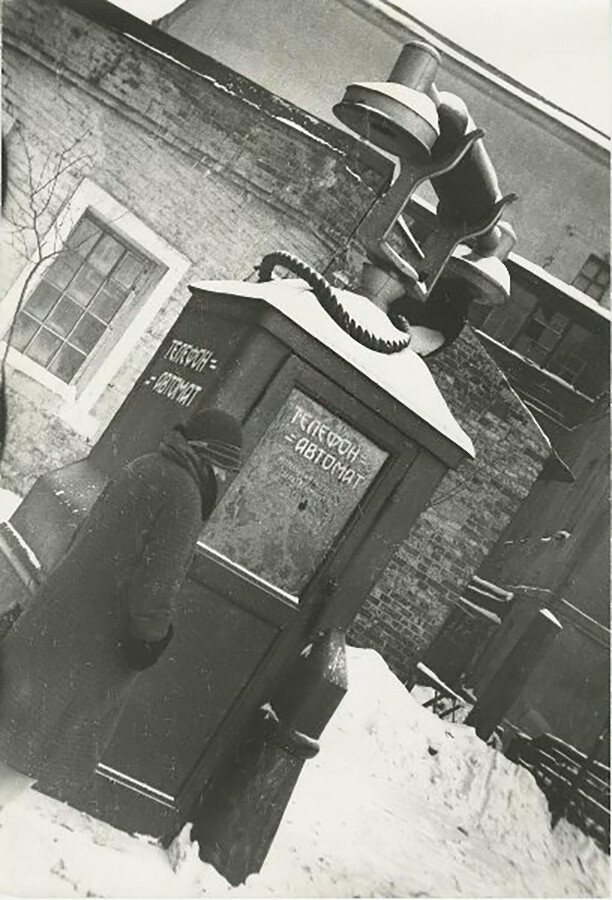
It was not until the early 1930s, when the entire telephone network was being modernized on a grand scale, that payphones became fully automatic. The Bolsheviks understood that the payphone fitted perfectly with the idea of an industrial, progressive society. However, even then, there was a severe shortage of them: One payphone per district was a typical situation in those days.
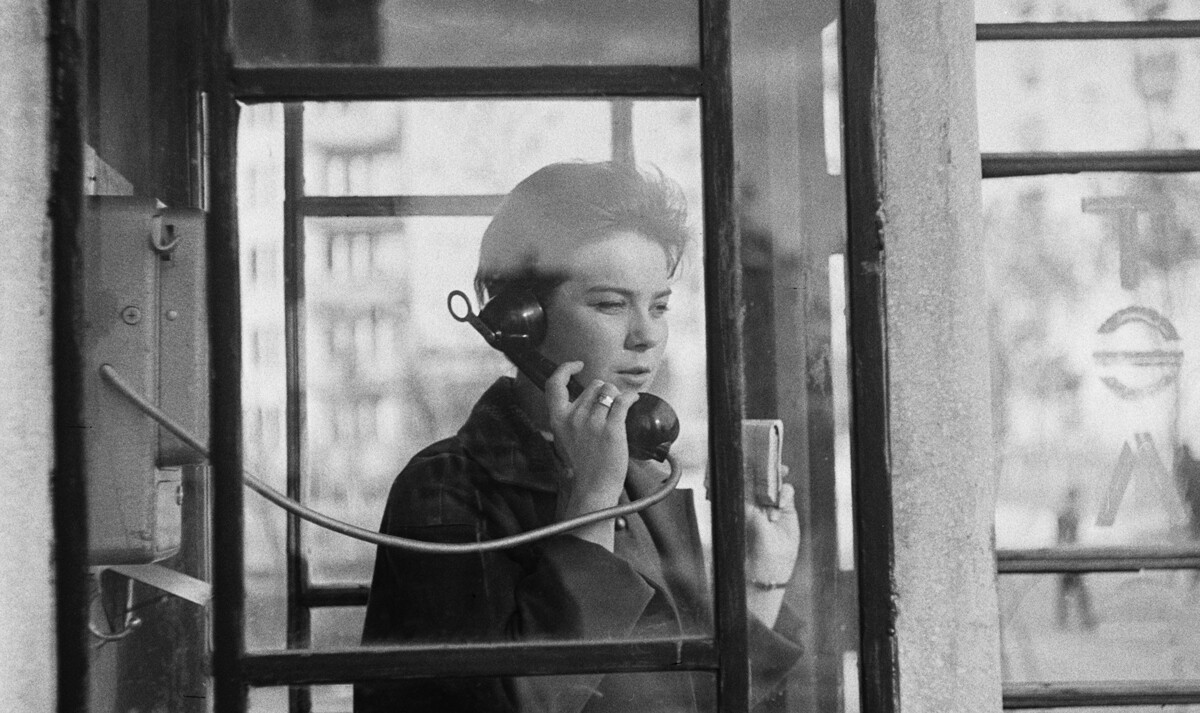
But, their introduction was gaining momentum. The year 1938 saw the appearance of the Soviet ‘V’-type payphone, which could also receive incoming calls, since each phone had its own number.
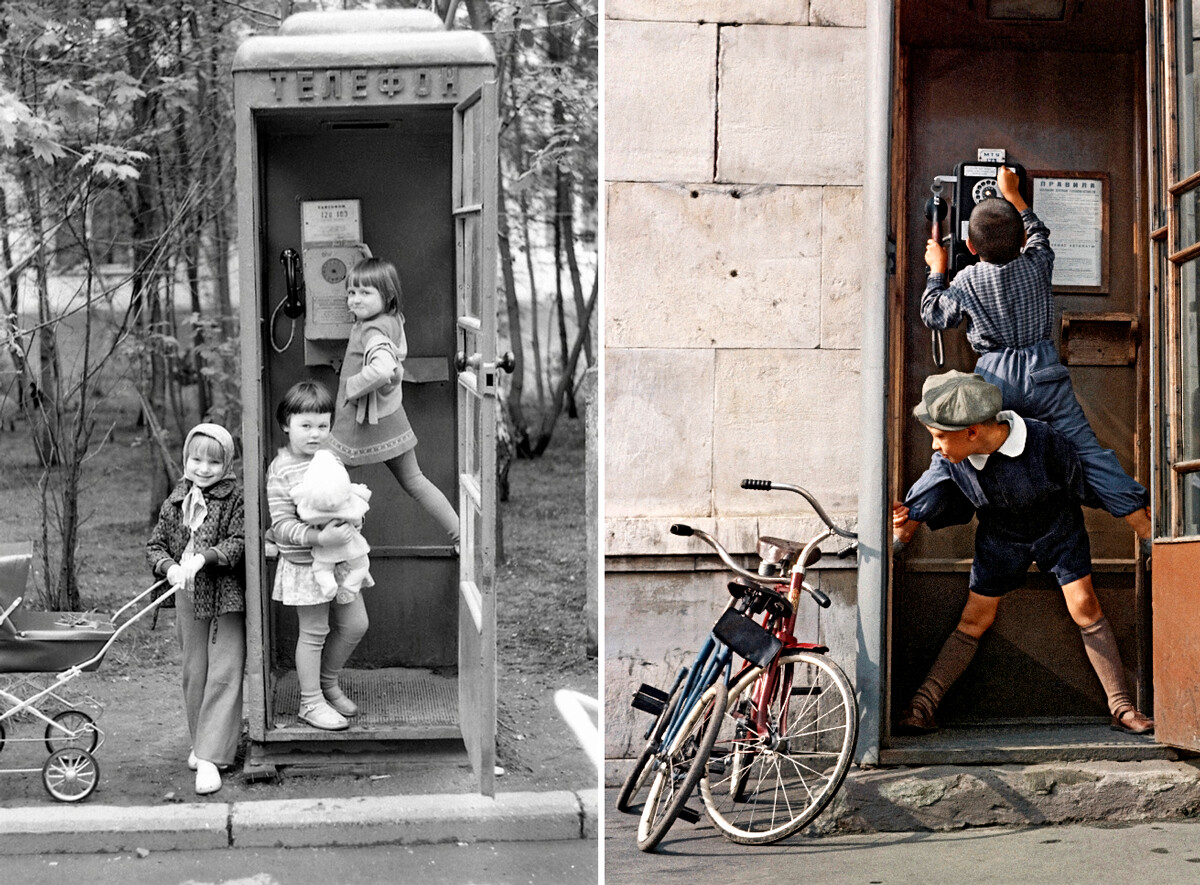
In the 1960s, there were around 6,000 payphones in Moscow alone and, at that time, there were no restrictions on the duration of calls. For two kopecks (for a long time that was the price of a call), people could talk for as long as they wanted. There was bustling activity around the phone booths: waiting lines built up for them, people made casual acquaintances beside them, sheltered in them from the rain or enjoyed a drink with friends, children played in them, etc.
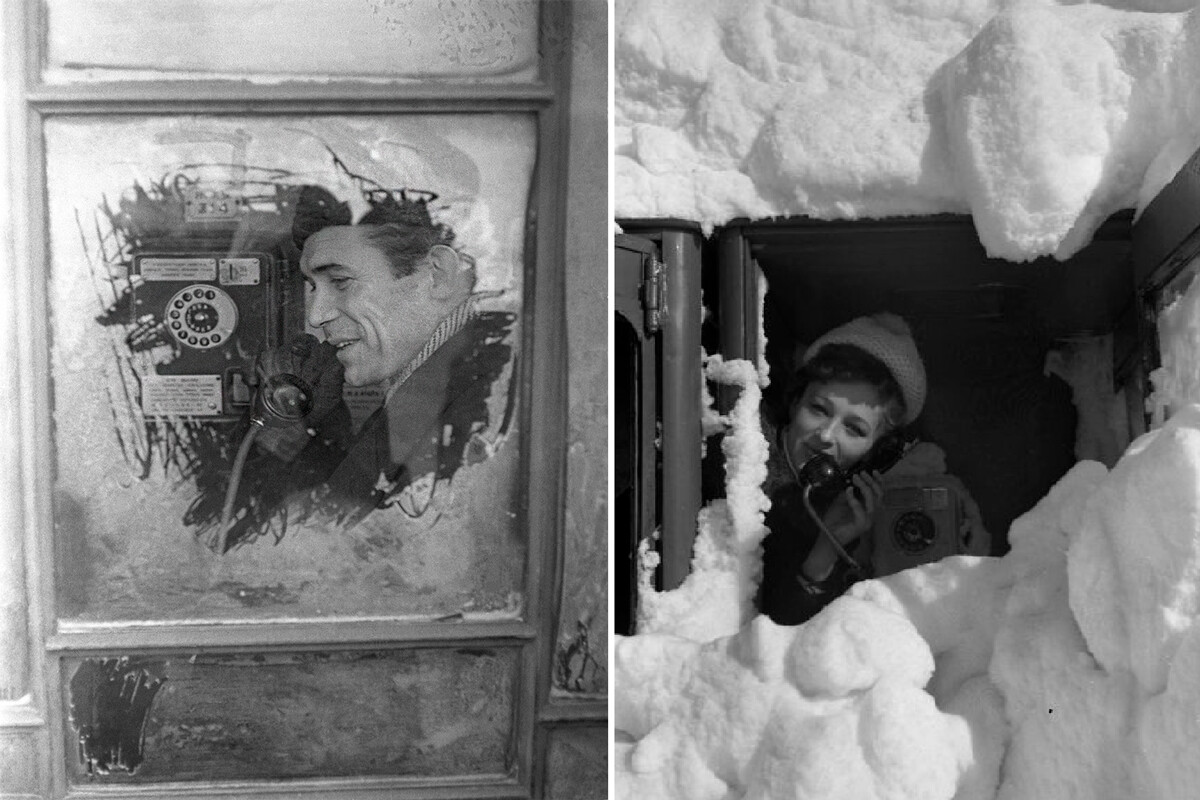
The regulations changed in the 1980s when calls were limited to a certain number of minutes. After that, you had to insert another coin.
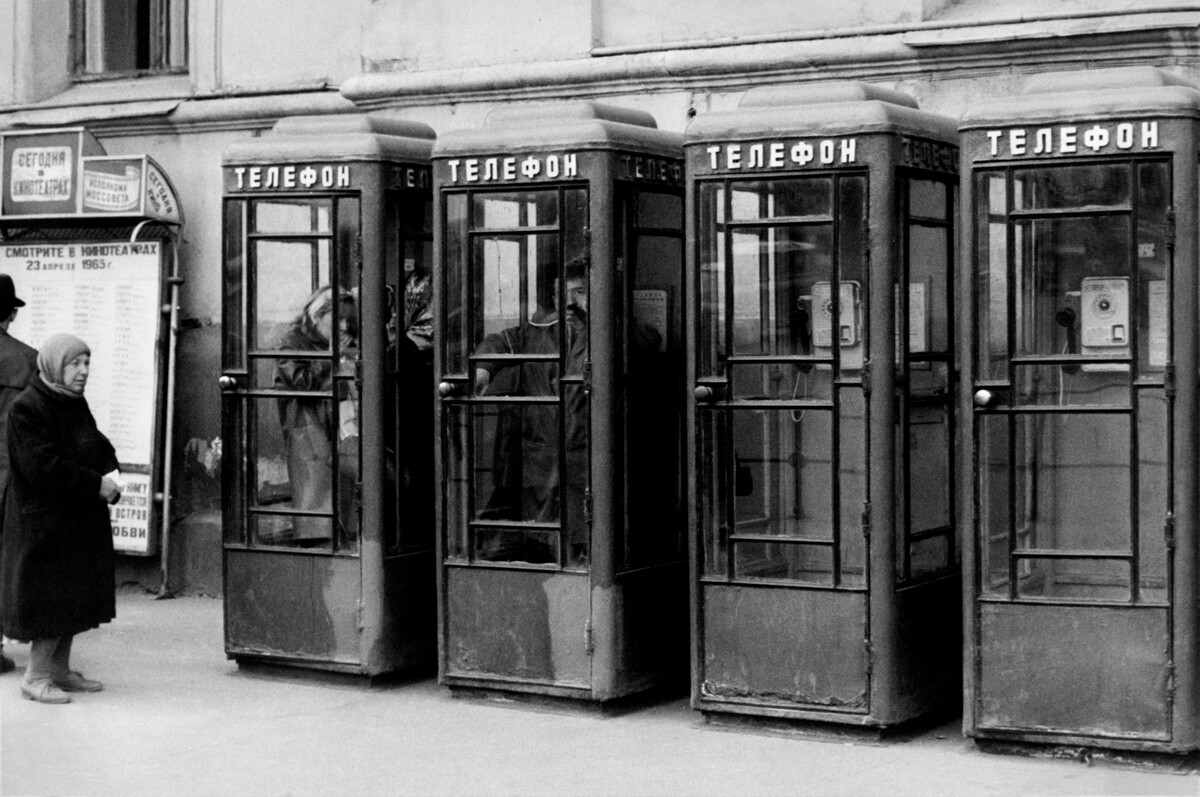 Russia, Moscow, Public Telephone Booths, 1960
Russia, Moscow, Public Telephone Booths, 1960
Not everyone agreed with the new pricing policy and resisted it. There were a multitude of ways of “fooling” the mechanism - from coins dangled on a thread to nothing more sophisticated than banging the coinbox - and thereby continuing to make unlimited calls.
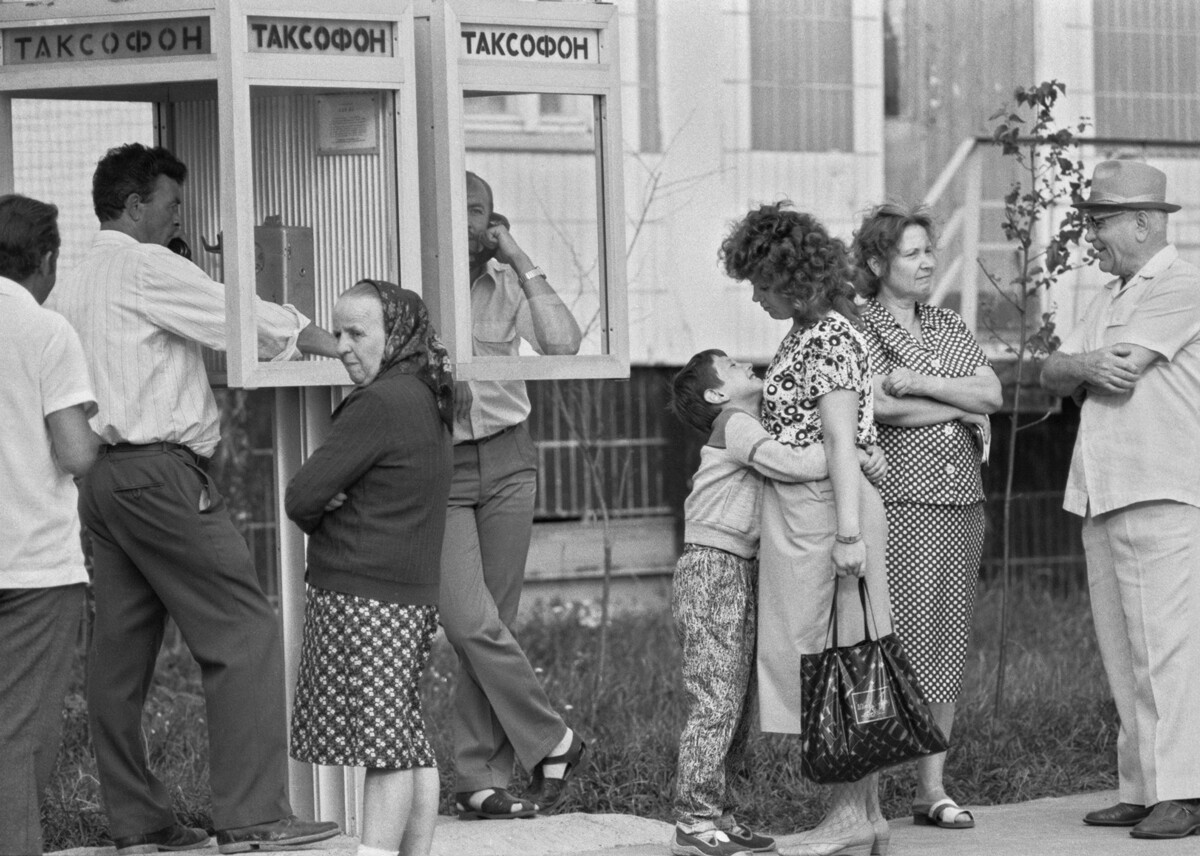
The largest number of payphones in Moscow was in 1991 - almost 34,000. This was the absolute peak, after which their numbers only declined.
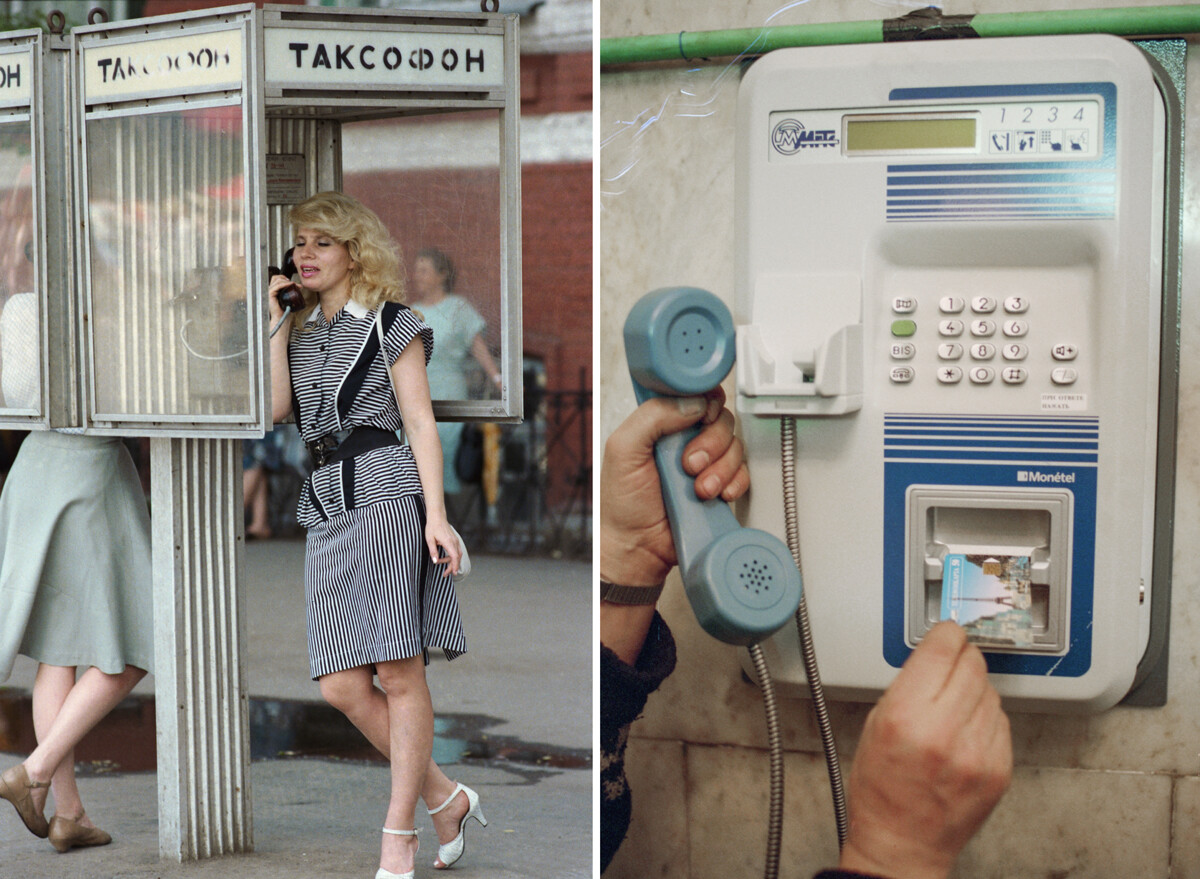
In the latter half of the 1990s, when payphones began to take cards (the cards put a limit on the duration of calls), a particular kind of criminal scam flourished in cities around card-operated payphones. Crooks tampered with the card slots to make them “swallow” the cards - and then got them out again and sold them on.

With the development of mobile communication and the internet, people began to forget about payphones, which became a sort of monument to a past age. But, to the surprise of many, they continued to be in use, despite the low demand. And, in 2019, they even became free (again)! You could make calls from a payphone to numbers operated by Russian providers just by dialing the requisite phone number.
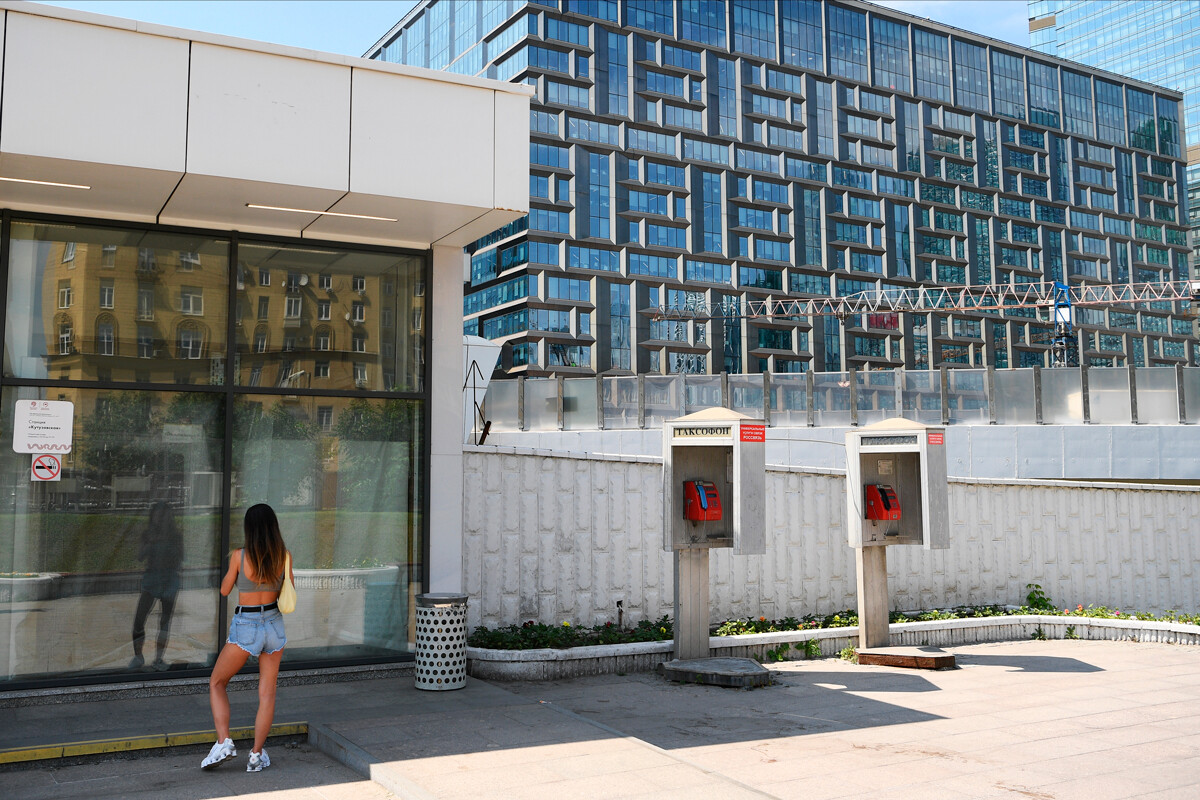
Rostelecom (the service provider) noted that demand for payphones had again increased during the coronavirus pandemic. “This appears to be linked to the impact of restrictions and people’s increased concern about the health of relatives and friends,” the company’s press service said.
